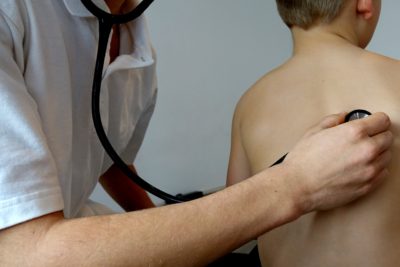Georgia remained No. 38 among states in an annual analysis of the well-being of children.

The 2020 Kids Count Data Book, released last week, is based on 2018 and 2019 figures and doesn’t reflect the devastation from the COVID-19 pandemic. While the disease is rarely serious for younger people who are infected, its overall impact on society and the economy has resulted in grim consequences for many families with children.
“Working to keep kids healthy and safe has never been more essential,” said Lisa Hamilton, president and CEO of the Annie E. Casey Foundation, which issues the report annually.
Massachusetts ranked first, New Hampshire second and Minnesota third for child well-being. Louisiana, Mississippi and New Mexico were 48th, 49th and 50th, respectively.
Nationally, the analysis shows improvement on most of the indicators in the index. But it also shows persistent racial inequalities across the factors that are measured.

Georgia showed progress in several areas.
On economic measures, education, and family and community, Georgia rated in the 30s among states, according to the analysis.
By 2018, the percentage of Georgia children living in poverty dropped to 20 percent, from 25 percent in 2010. The national average is 18 percent.
In the category of health, though, Georgia ranked 46th among states.
The state’s percentage of low-birthweight babies rose to 10.1 percent from 9.7 percent, and remains higher than the national average.
“Both Georgia and the U.S. have seen rises in low-birthweight rates over the past several years, and this is concerning because it tells us that we have issues with maternal health,’’ said Rebecca Rice of the Georgia Family Connection Partnership, the Kids Count grantee in Georgia.

“Ensuring that Georgia’s women have access to care and to healthy food and spaces will help us improve low-birthweight rates,’’ she said Monday. “Furthermore, African-American women in Georgia are twice as likely as white women to have a low-birthweight baby, which indicates that we need to be looking at racism as an underlying risk factor.’’

The rate of kids without health insurance dipped to 8 percent, down from 10 percent in 2010, but still exceeds the national average of 5 percent.
The Georgia children who are overweight or obese stayed level, at 31 percent.
The report said the nation “failed to provide African-American, American Indian and Latino children with the support necessary to thrive while states failed to dismantle barriers facing many children of color.’’
Black children were much more likely to live in single-parent families and high-poverty neighborhoods, the report said. American Indian kids were almost three times more likely to lack health insurance. And Latino children ran the greatest risk of not attending school when they were young.

Polly McKinney of the advocacy group Voices for Georgia’s Children told GHN that “regardless of where Georgia falls in this ranking, we know that children and families who struggled before COVID-19 are struggling even more now. Education, physical and mental health, nutrition and, in fact, successful life trajectories are now in an even more precarious position for an entire generation of kids.’’
She also noted disproportionate outcomes for children and youths in certain racial and ethnic populations.
“It would behoove all of us in advocacy, business, government and everything else to reflect on what these numbers really mean and do our best to address these issues with thoughtfulness and haste moving forward,’’ McKinney said.
Rice noted that Georgia’s rate of child and teen deaths has improved since 2010, from 30 per 100,000 to 28 per 100,000 in 2018.
“The trend moved in the right direction,’’ she said. “The health and safety of Georgia’s kids should be paramount to every Georgia resident, so while it’s good that we have improved, it is concerning that our rate is still higher than the national average of 25 per 100,000.’’

